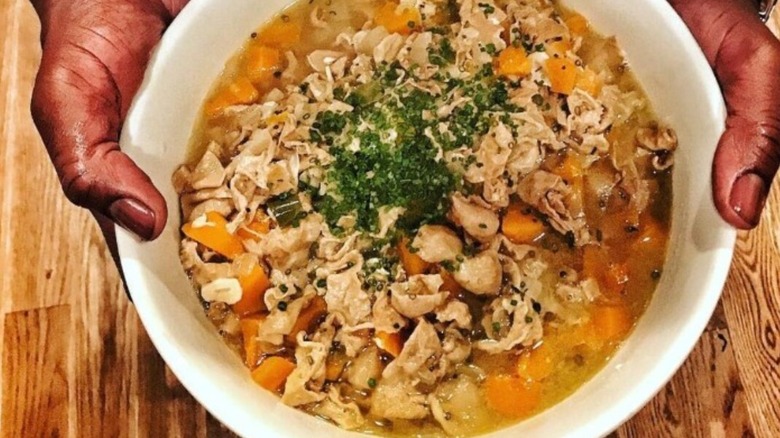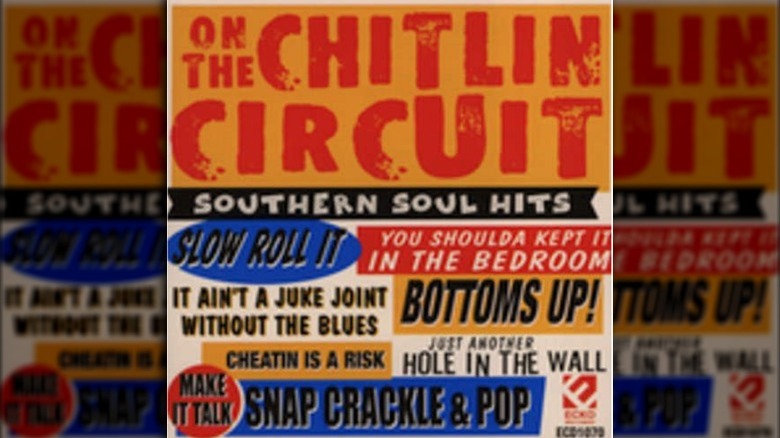The Secret Historic Code Behind Chitlins
If you're a Yankee, there's a really good chance you've never tried chitlins, which is a shame because chitlins happen to be one of the classic Southern foods you really need to try in this lifetime. Now, in all honesty, it's not that you're certain to like them. Notwithstanding their adorable name (which is actually short for "chitterlings"), chitlins are pig intestines. Although when they're served up, deep-fried with vinegar and hot sauce, as part of a classic Southern meal that includes crispy fried chicken, collard greens, and black-eyed peas, they are actually beloved by some, according to What's Cooking America.
Although the outlet also pointed out that some people are known to literally flee the house when they start to smell this polarizing pork dish cooking. Nevertheless, it could be worth your while to give this Southern delicacy a try because, hey, you never know if you'll be one of the people that appreciates this uniquely Southern delicacy, and because the dish is so deeply imbued with historical significance. You see, as it turns out, chitlins have a secret history. More specifically, they were part of a secret code that has a really important place in Black and Southern history.
Here's what it meant to be part of the "Chitlin Circuit"
Nowadays living "high on the hog" refers to living a life of luxury (via Merriam-Webster). Back in Colonial America, however, it meant something far more specific, which is that you didn't have to eat chitlins, according to the USDA's Food Safety and Inspection Service. In other words, when pig-slaughtering time came around, you were in a position to afford the loin, ribs, and other choice cuts, while the intestines (along with the feet and other stuff that came from the side of the pig that was lowest to the ground) went to people of less significant means.
With a texture the USDA compares to calamari, eating chitlins doesn't sound like such a bad deal. In fact, for many Southerners of West African decent, it was a pleasure to eat all edible parts of the pig, and a matter of pride to come up with the best and most resourceful ways to prepare them, according to Atlas Obscura. Chitlins remained so popular among Black Americans living in the South that they actually became synonymous with Black American culture during the Jim Crow era of segregation. If a restaurant or club publicized that it served chitlins, then it was understood to be a safe place for Black performing artists and fans to congregate to enjoy some of their favorite music and other entertainment. Collectively, these venues were know as the "Chitlin Circuit."

